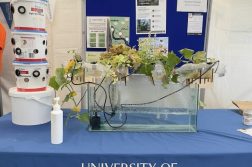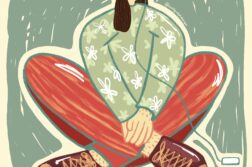Rewilding is the process of reinstating or reinvigorating natural processes or species in landscapes and habitats which have been affected by human activity. The ultimate aim of the practice is to restore ecosystems to a level where they can be self-sustaining. This process has been successfully used in Britain for years and is crucial in the fight against climate change and biodiversity loss.
Rewilding covers actions as small as planting wildflowers in a window box or installing a pond in your garden, or as big as creating a new area of marshland or replanting an entire forest over thousands of acres. All efforts to promote natural processes are contributing to the rejuvenation of Britain’s flora and fauna.
According to Rewilding Britain, the UK’s top rewilding charity, their ultimate vision is to see 5% of Britain engage in rewilding, and this target may not be out of reach… Under the charity’s guidance, at least 300,000 acres of British land – almost the size of Greater Manchester – could be rewilded within the next three years by connecting landowners, farmers, community groups and local authorities to unite in the effort. It is estimated that such changes could prevent up to 70% of predicted extinctions.
A well-known example of rewilding in Britain is the introduction of Eurasian Beavers – a native but now extinct British mammal – to our rivers. This began with the Scottish Beaver Trial in 2009-14, which resulted in two successful beaver populations as well as the rodents becoming a protected species under Scottish law. More recently in 2015-20, a beaver population was introduced in Devon in the River Otter Beaver Trial, the success of the trial resulted in legislation protecting the future of these magnificent animals. Wales are currently considering implementing their own version of the project. Beavers are a ‘keystone species’, meaning they are particularly beneficial to landscapes because the dams they build slow down water flows and create wetlands, in turn giving a home to species including otters, water voles, common frogs & toads, water shrews and insects like dragonflies, as well as providing a natural defence against floods and landslides.
Another rewilding success took place at the Knepp Castle Estate in West Sussex in 2001. The owner Charles Burrell decided to rewild the 3500-acre estate by replacing dairy cows with Old English Longhorn cattle, Exmoor ponies, Tamworth pigs and deer. This promoted grazing and vegetation growth, thus allowing diverse plant life to thrive, and providing an environment where rare species like turtle doves, nightingales, peregrine falcons and purple emperor butterflies could breed.
Research led by the University of Sussex has suggested that as well as promoting biodiversity and protecting our wildlife, rewilding could mitigate climate change. Using land as naturally occurring habitats rather than breeding grounds for livestock, most notably cows, would significantly reduce the methane produced by the rearing of agricultural cattle. It also allows more trees to grow, thus increasing absorption of carbon dioxide from the atmosphere.
Dr Chris Sandom, Senior Lecturer in Biology at the University of Sussex, said: ‘The key thing to remember here is that nature is complex and needs to be complex. Trophic rewilding aims to restore nature, including its complexity, and then to allow it to take its own path.‘ If that path could lead to a nationwide push against climate change, then I say we commit to walking down it together.



